One of the highlights of my recent trip to Japan was observing the wild snow monkeys at the Jigokudani Monkey Park. The snow monkeys or, more accurately, Japanese macaque (Macaca fuscata) are native to this remote mountainous region. But they entered the international spotlight with the January 1970 issue of LIFE Magazine.
The striking cover photo, by photographer Co Rentmeester, was accompanied by a short article and several stunning photos.
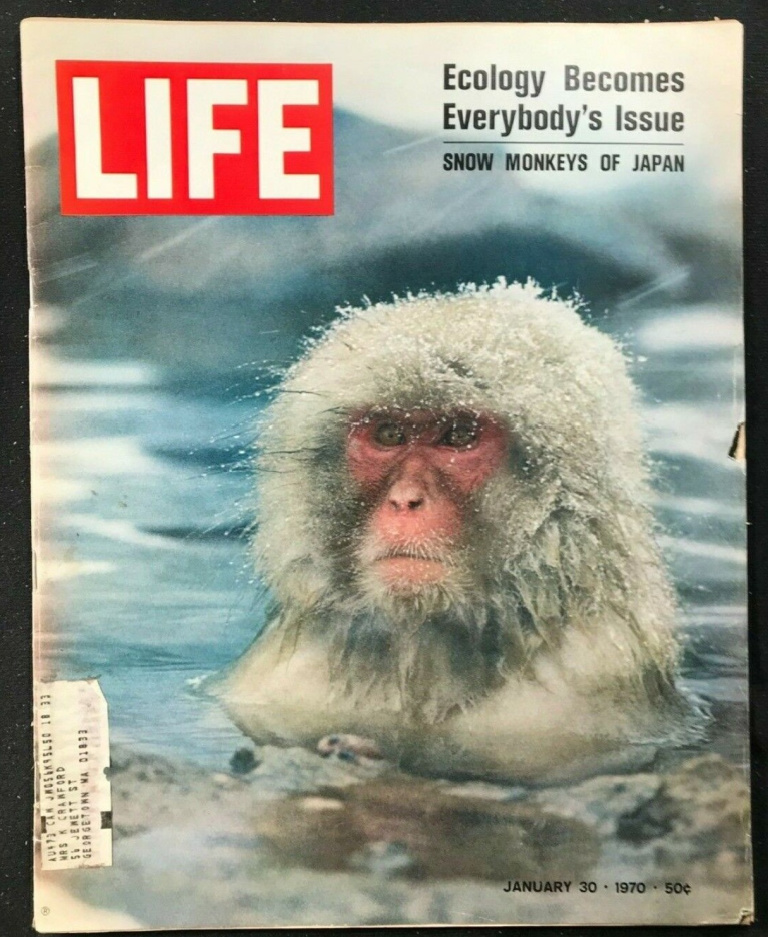 The article begins “On a rugged, windswept peninsula of northern Honshu, farther north than any other primates except man, a small colony of Japanese monkeys is maintaining a lonely outpost against the elements.” It goes on to explain how a troop of the monkeys have “discovered the comforts of a natural hot spring and regularly luxuriates in a steam pool”.
The article begins “On a rugged, windswept peninsula of northern Honshu, farther north than any other primates except man, a small colony of Japanese monkeys is maintaining a lonely outpost against the elements.” It goes on to explain how a troop of the monkeys have “discovered the comforts of a natural hot spring and regularly luxuriates in a steam pool”.
Fast forward 50 years, and a quick Google search reveals thousands of photos of these snow monkeys while, according to Tripadvisor’s over 2000 excellent rating reviews, visiting them is the most popular thing to do in the region.
The Jigokudani Monkey Park (Yaen Kōen), part of the over 366,000-acre Joshin’etsukogen National Park, offers a rare opportunity to observe Japanese macaques in their natural habitat. “The macaques are truly wild. Jigokudani Yaen-Koen has no fences or barriers to prevent them from roaming between the park and their natural mountain habitat. Their protection and preservation are paramount, so visitors are not permitted to feed them or handle them.” stresses the Japan Travel website.
The park is deliberately located “in a mountain, far from town” in a rocky ravine with steep cliffs along the sides, a fast-flowing river at the bottom and a hot spring pool.
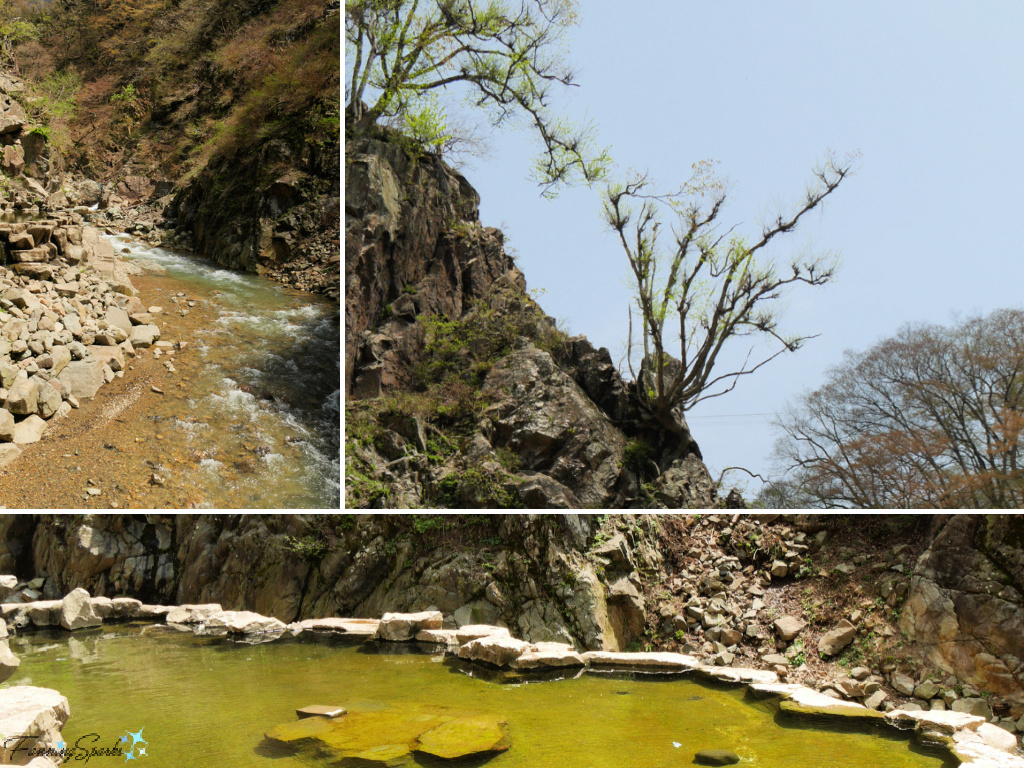
The location is indeed off the beaten path. We stayed in the nearby city of Nagano overnight, then took a local bus to the nearest bus stop. From there, it took about 35 minutes to walk the approximately 2 kilometers to the park entrance. It was a pleasant walk through the forest.
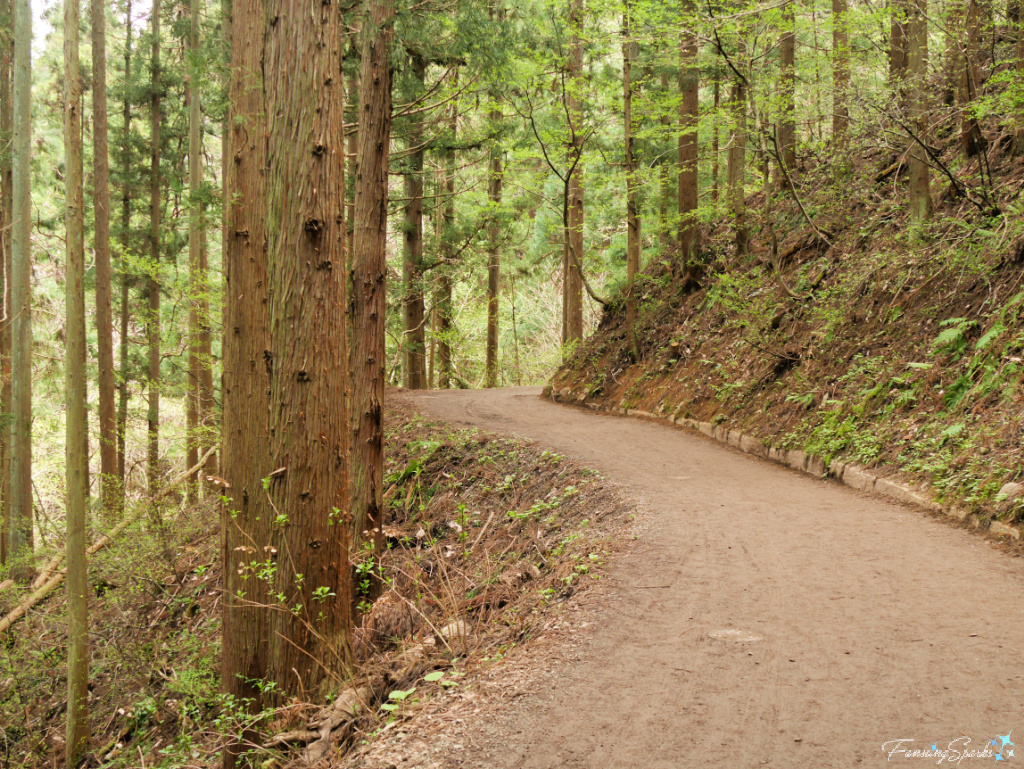 When traveling to a natural habitat to see wildlife it’s important to understand there’s no guarantee they will show up—regardless of the effort you’ve made to reach your destination. Visitors are clearly warned of this possibility at the Jigokudani Monkey Park. For instance, a recent post on their Facebook page stated, “They don’t just live in public facilities; they are monkeys who ‘come’ to the public while living in the mountains. That’s why sometimes even when it’s business hours, ‘the monkeys are not in public’. We appreciate your understanding.” Thus, we were thrilled to learn the monkeys were present that morning.
When traveling to a natural habitat to see wildlife it’s important to understand there’s no guarantee they will show up—regardless of the effort you’ve made to reach your destination. Visitors are clearly warned of this possibility at the Jigokudani Monkey Park. For instance, a recent post on their Facebook page stated, “They don’t just live in public facilities; they are monkeys who ‘come’ to the public while living in the mountains. That’s why sometimes even when it’s business hours, ‘the monkeys are not in public’. We appreciate your understanding.” Thus, we were thrilled to learn the monkeys were present that morning.
The first monkey we saw was busy picking through something on the ground.
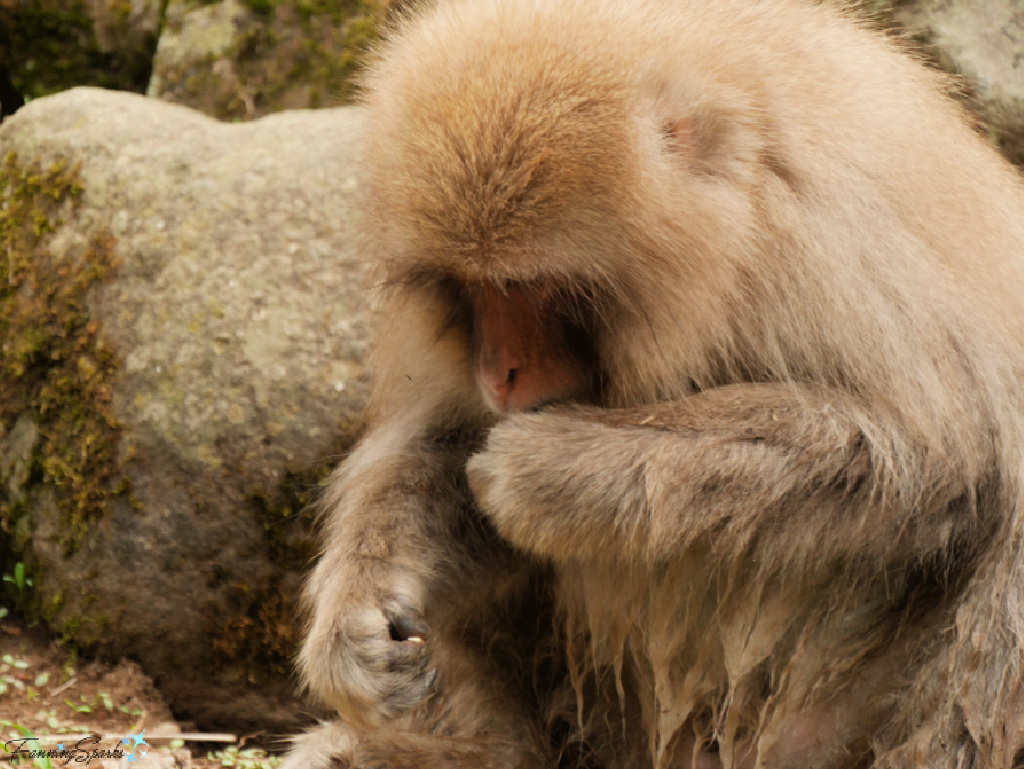
As I learned later, these were probably seeds left by the park attendants. The Jigokudani Monkey Park does “feed monkeys to bring … them to our park where we can observe them closely. The feed we give them is a little bit better than the food that monkeys usually get in mountains. … we give monkeys barley with chaff, soy beans or apples, depends on the situation like weather and season. For example, barley and soy bean are a sort of better than monkeys’ usual food like grass, tree leaves and flowers.”
The website goes on to explain the criticality of not overfeeding the monkeys to avoid negative impacts such as “plethora of nutrition and ecocide”. The Park stresses that “feeding is not an entertainment show”. They deliberately do not announce feeding times in advance. Visitors are strictly forbidden from feeding the monkeys. In fact, visitors are forbidden from even bringing food into the park. Having experienced the terror of monkeys swarming me for food while visiting other monkey parks, I definitely appreciated these restrictions.
We observed a park attendant holding a bucket of food and calling out to the monkeys. A single monkey sat waiting patiently before the others arrived.
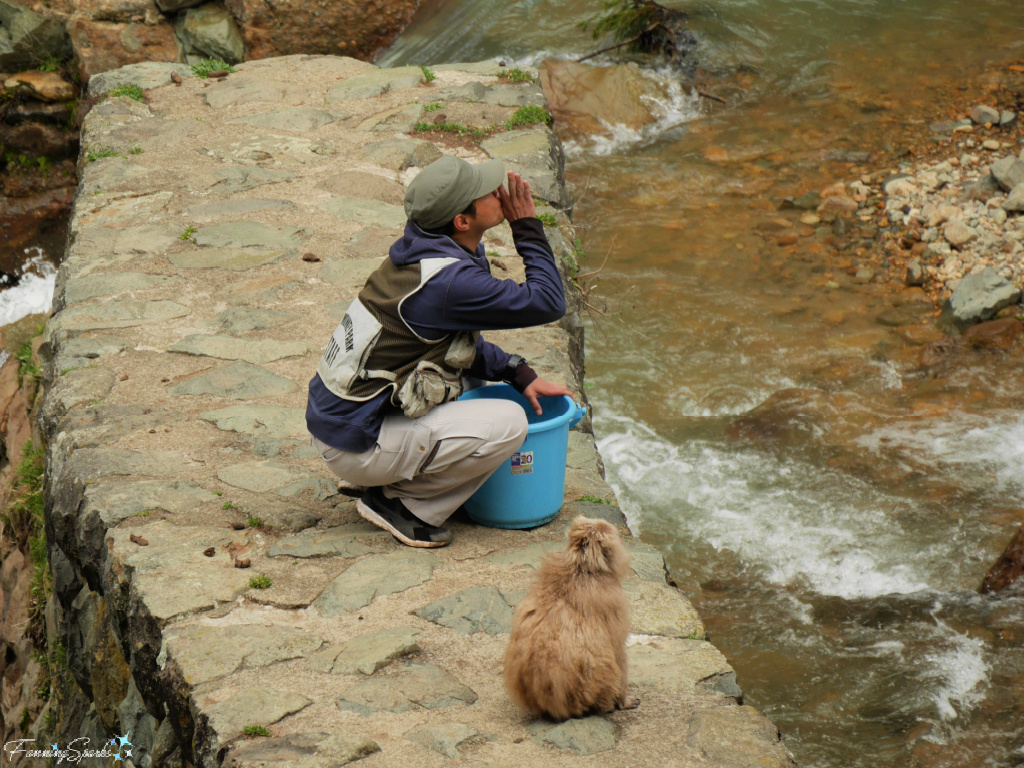
At first I was surprised to see how close the monkeys came to the park attendants. But it quickly became apparent the monkeys are not afraid of people, simply ignoring them as they go about their business. The Park website explains “Wild Japanese macaque and humans coexist here in the junction of their separate spheres of activity. Though the monkeys are wild, they can be observed so close up that visitors can practically reach out and touch them. Regardless of the fact that they show no interest in visitors, they do not run away either, making for an interesting sense of distance yet closeness. At Jigokudani, everyone can witness this spectacular display of wildlife.”
People and monkeys move around the steps and walkways freely. It wasn’t unusual to turn around and find a monkey right beside you. Here’s a case in point, Marian, my sister and travel companion, stops to take photos of a monkey who was passing her on the steps.

Despite the easy closeness, visitors are absolutely prohibited from touching the monkeys. Warnings are posted everywhere and every visitor is specifically asked to acknowledge the posted rules when they enter. Yet, some people can’t seem to resist. I was aghast when a teenage girl standing right next to me stuck out her finger to touch the back of this monkey I was photographing.
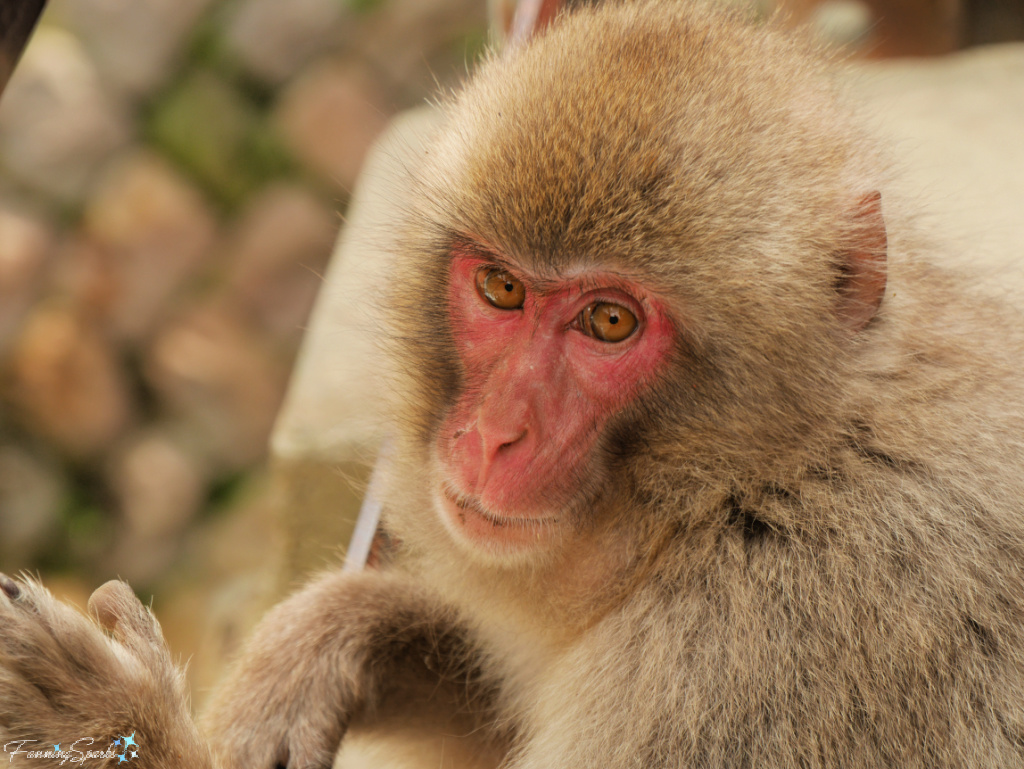
The monkey instantly let out a shriek of alarm and ran away. I’m not sure who was more shocked—the monkey or me! The next second, a park attendant was reprimanding the offender who, honestly, didn’t seem at all contrite.
While the Jigokudani Monkey Park is most famous for winter scenes of snow-covered monkeys bathing in steaming hot water, we really enjoyed our visit in early April. We didn’t have to contend with cold, icy conditions and we still got to see a few monkeys in the hot springs pool.
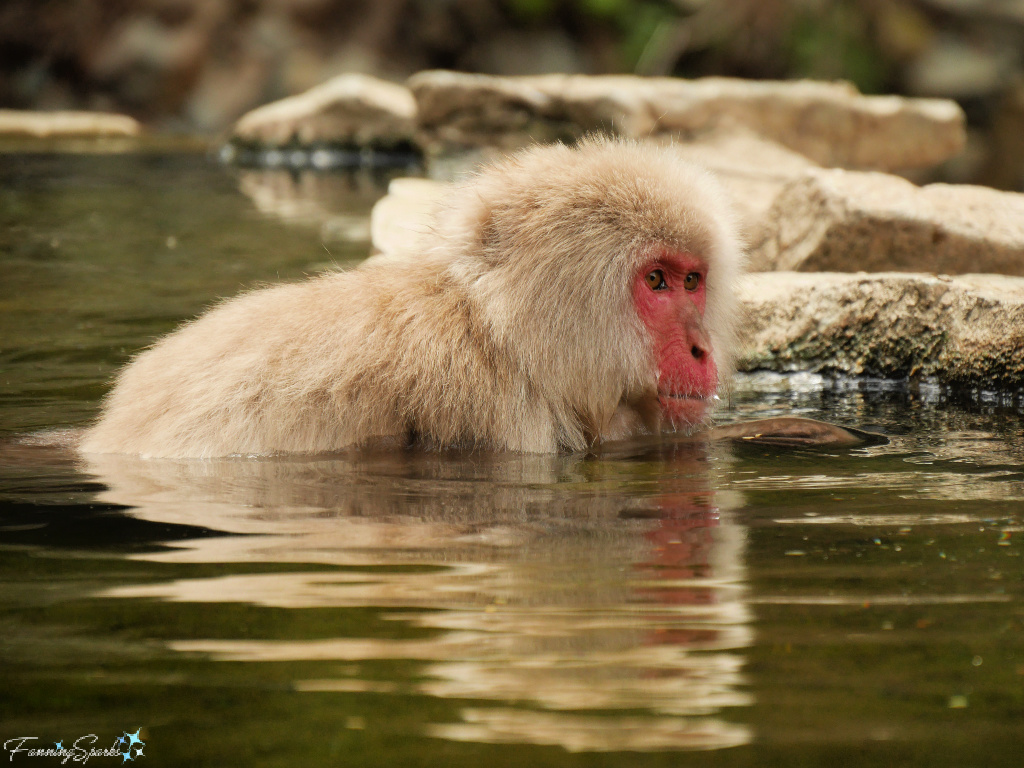
I was fascinated to learn Japanese macaques typically do not like water. As reported by Ben Crair in his 2021 Smithsonian Magazine article, “Monkeys … started to bathe at the onsen at Jigokudani nearly 60 years ago. ‘I was the first to see them go in’, a retired professor named Kazuo Wada from the Primate Research Institute at Kyoto University told me. The year was 1963, he said, and he was studying the monkeys at Jigokudani. The park at that time provisioned a group of 23 monkeys with apples near an outdoor onsen for guests of a local ryokan, a traditional Japanese inn. The monkeys avoided the water until one day, an apple rolled into the bath. ‘A monkey went after it and realized it was warm,’ Wada recalled. The monkey took another dip a few minutes later. Young monkeys watching from the edge became curious and soon tried the onsen for themselves.”
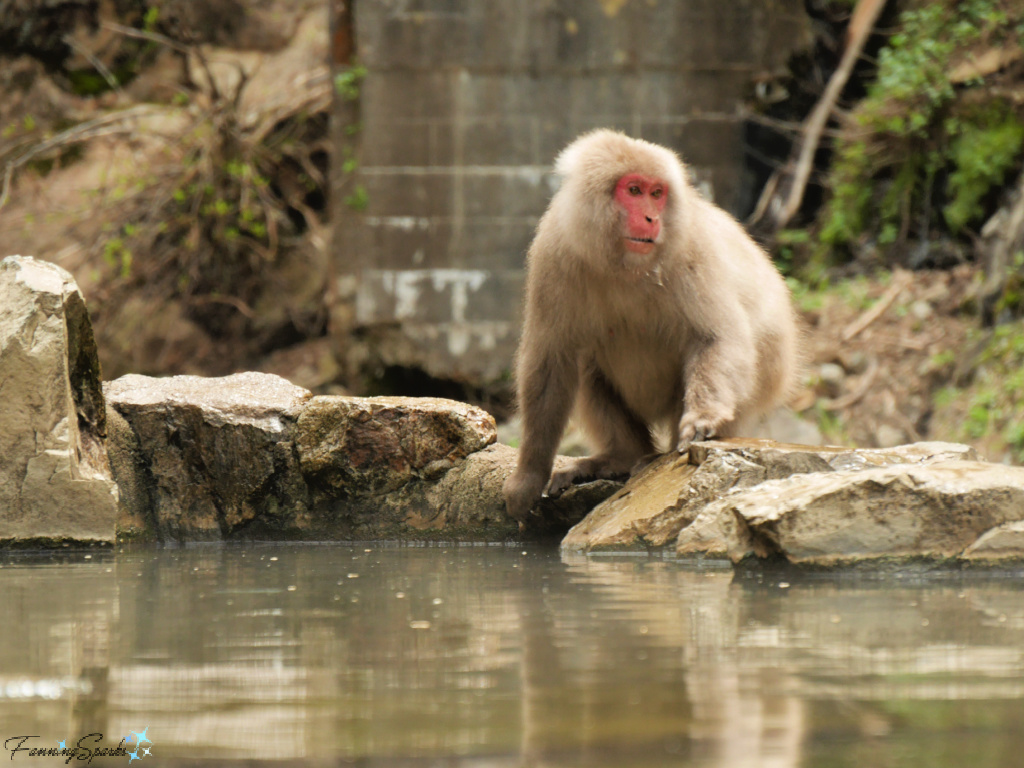
“Both scientists and locals had been watching the Jigokudani monkeys for years, but no one had seen them enter the water until that moment. Within a few months, bathing was popular with the younger monkeys in the group. It was more than just a fad. Their babies learned to swim as well. Eventually, a third of all monkeys in the troop were bathing. In 1967, the park had to build a dedicated monkey onsen nearby for hygienic reasons, to make sure they weren’t bathing with humans.”
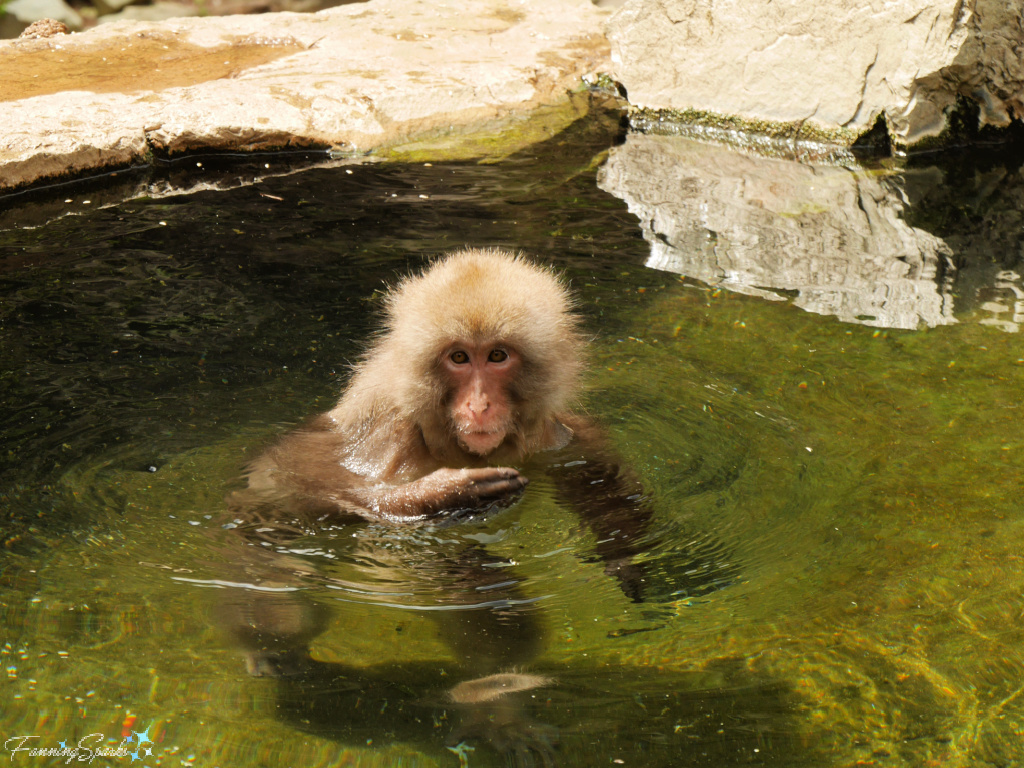
Another advantage to visiting the park in the spring is baby monkeys! We saw monkeys of various ages—their average lifespan is 25-30 years—when we first arrived but no babies.

About a half hour into our visit, the park attendant brought out some more food and a large group of monkeys came down from the hilltops including this mother and her baby. The baby was clinging to its mother’s back when they first arrived but then quickly jumped off to follow her down the rocks.
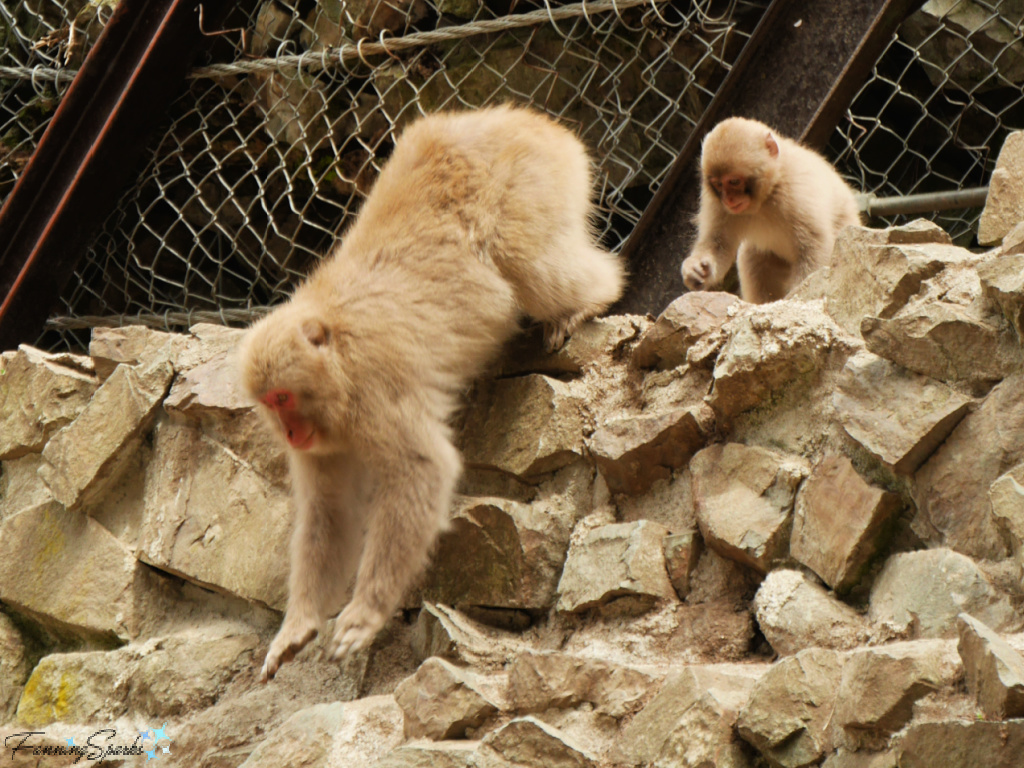 I’m no expert but, based on the descriptions provided by author Cynthia Overbeck in her book Monkeys: the Japanese Macaques, I’d say this baby was probably 3-5 months old: “The only parts of the infant macaque’s body that are well developed at birth are its tiny hands. …The baby macaque must hold on tightly to its mother’s fur in order to survive. …As the mother moves along, the baby rides under her belly, hanging on tightly to her fur. …At three or four months, it is strong enough to climb up on its mother’s back and hang on. Now it can ride along on top instead of clinging to the mother’s belly. … At this time the baby also begins to eat solid food in addition to drinking its mother’s milk.” These photos show the baby eating alongside its mother.
I’m no expert but, based on the descriptions provided by author Cynthia Overbeck in her book Monkeys: the Japanese Macaques, I’d say this baby was probably 3-5 months old: “The only parts of the infant macaque’s body that are well developed at birth are its tiny hands. …The baby macaque must hold on tightly to its mother’s fur in order to survive. …As the mother moves along, the baby rides under her belly, hanging on tightly to her fur. …At three or four months, it is strong enough to climb up on its mother’s back and hang on. Now it can ride along on top instead of clinging to the mother’s belly. … At this time the baby also begins to eat solid food in addition to drinking its mother’s milk.” These photos show the baby eating alongside its mother.
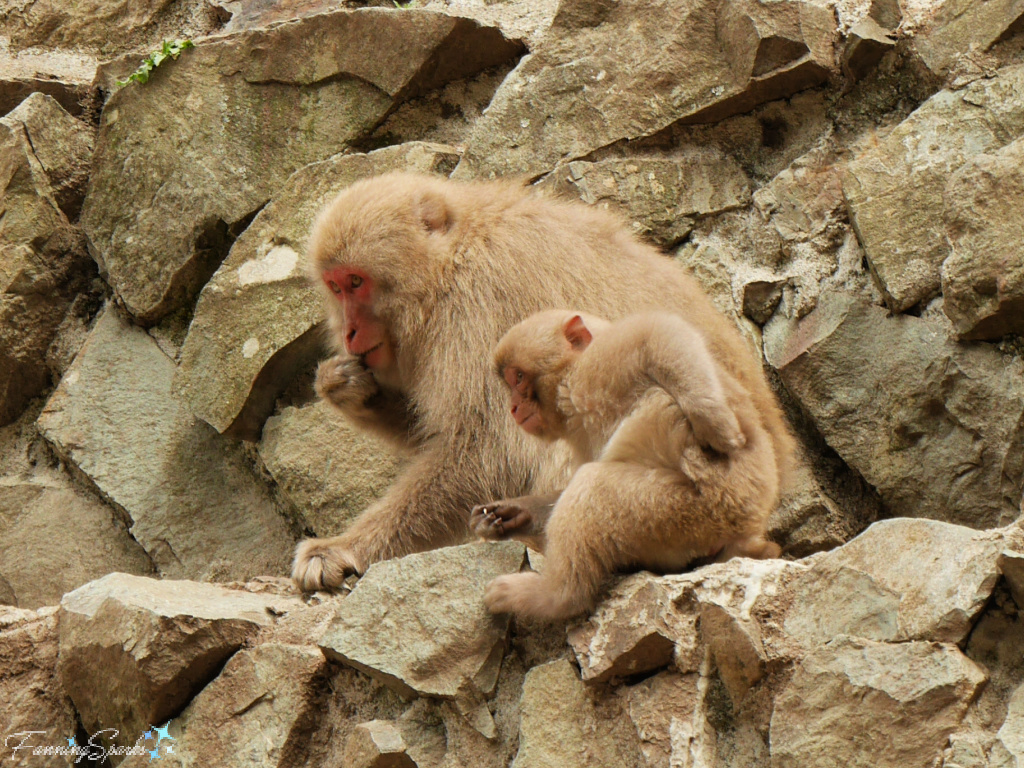
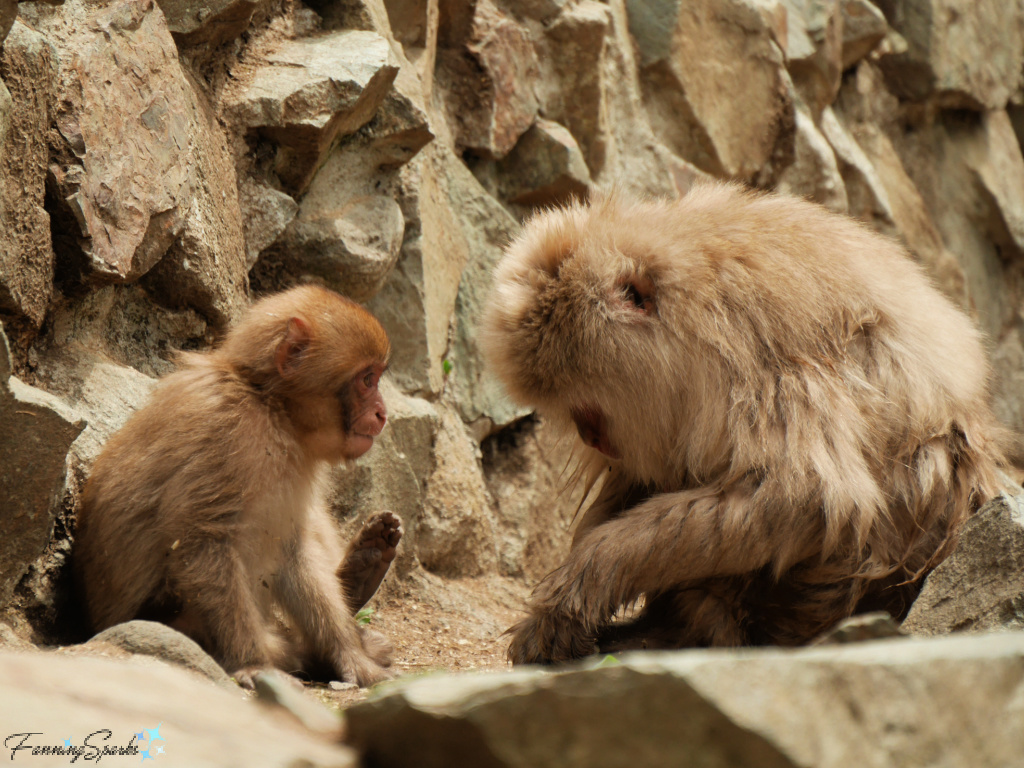
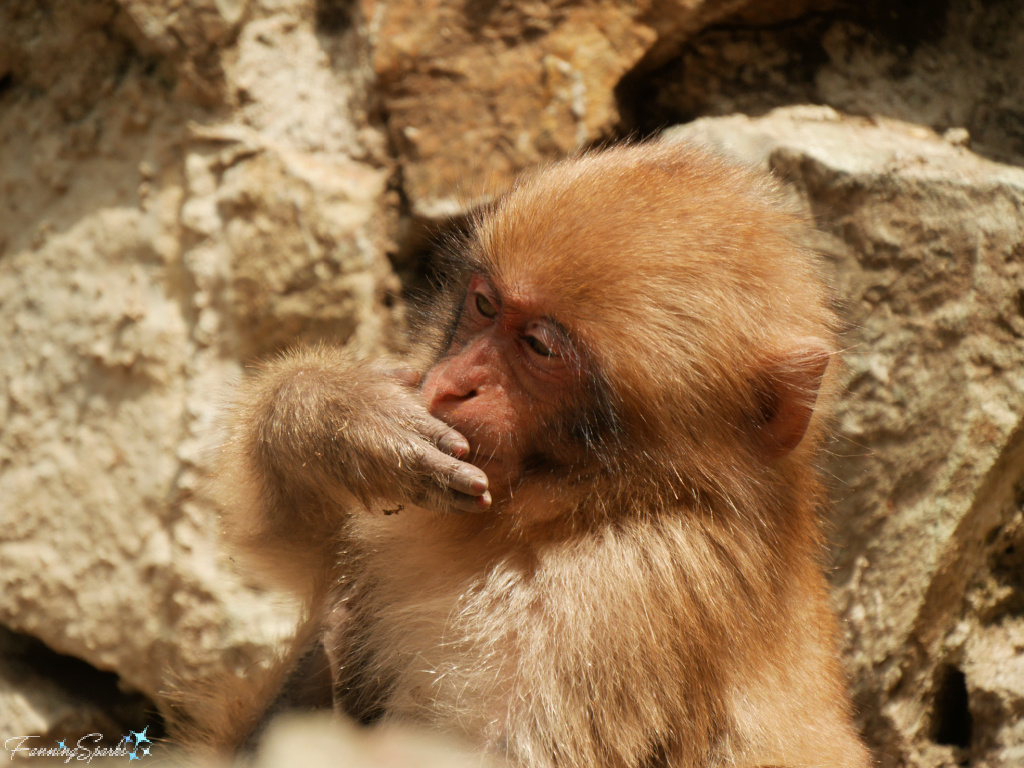
Interestingly, Japanese macaque mothers have sole responsibility for raising their young. The Park website explains “In the society of the Japanese Macaque, both males and females have many partners in a breeding season. Females know own mother-child relationships between their infants but there is no father-child relationships. Neither males nor infants know their own father-child relationships. That’s why males do not get engaged child-raising.
Only mothers breast-feed infants and stay together all the time to guard them from dangerous. But this is only for infants of one’s own and for immediate family. They do not care if other infants are in a danger. In that case males help such infants. Males have the role of father for all members of the troop.”
After eating, this baby got a little braver and started to explore on its own. It effortlessly climbed up the support wires and swung onto this sign for a little rest or, maybe, just to show off! In any case, we were smitten.
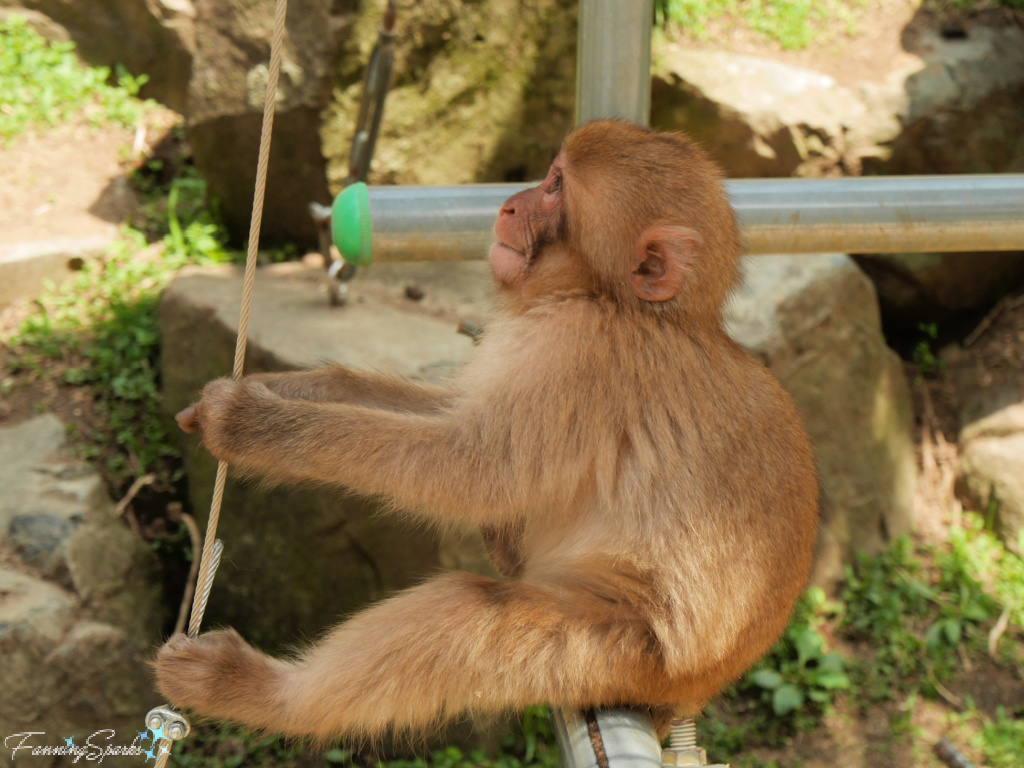

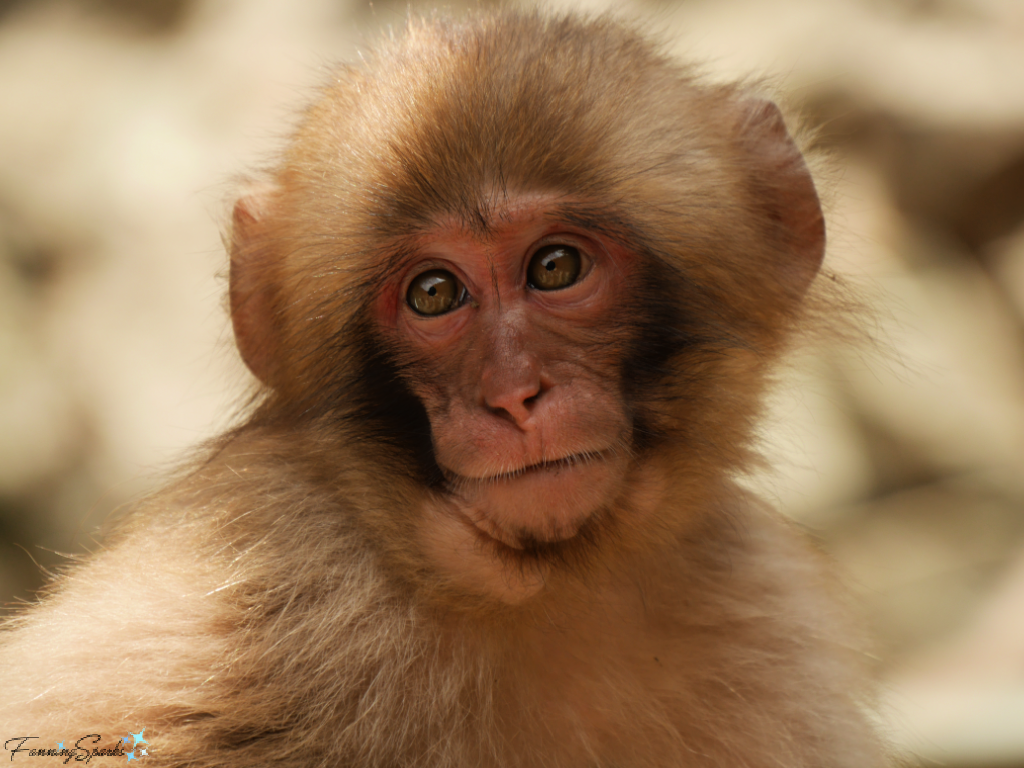
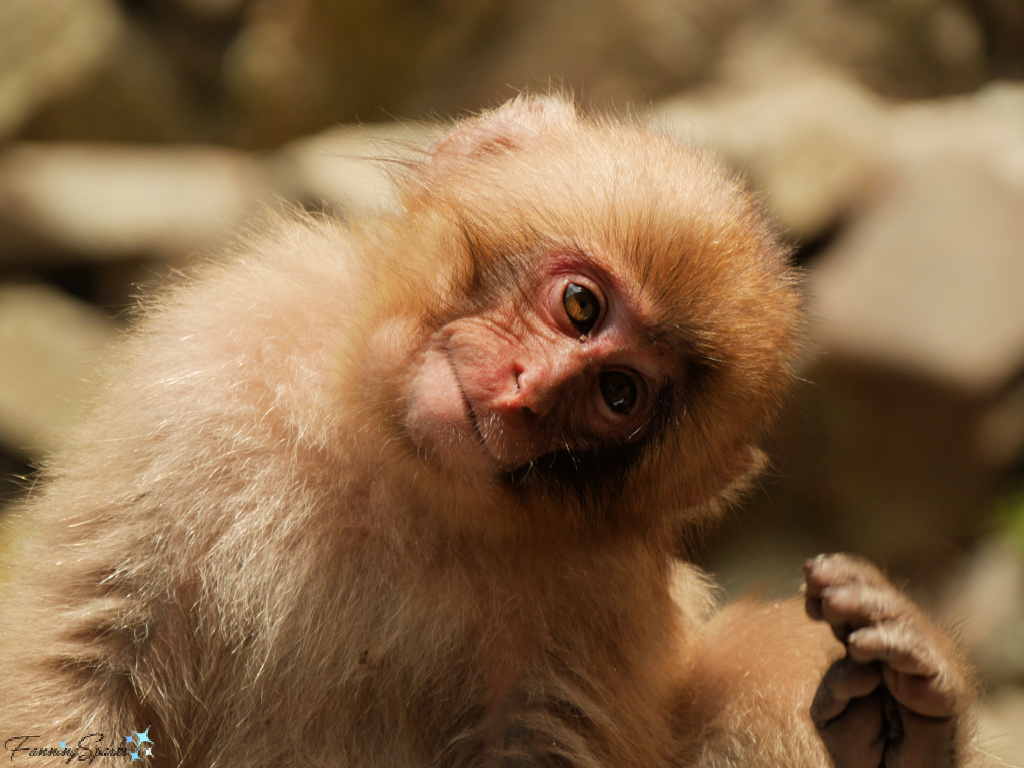 After its endearing antics, the little one returned to its mother for what appeared to be a little kiss…
After its endearing antics, the little one returned to its mother for what appeared to be a little kiss…
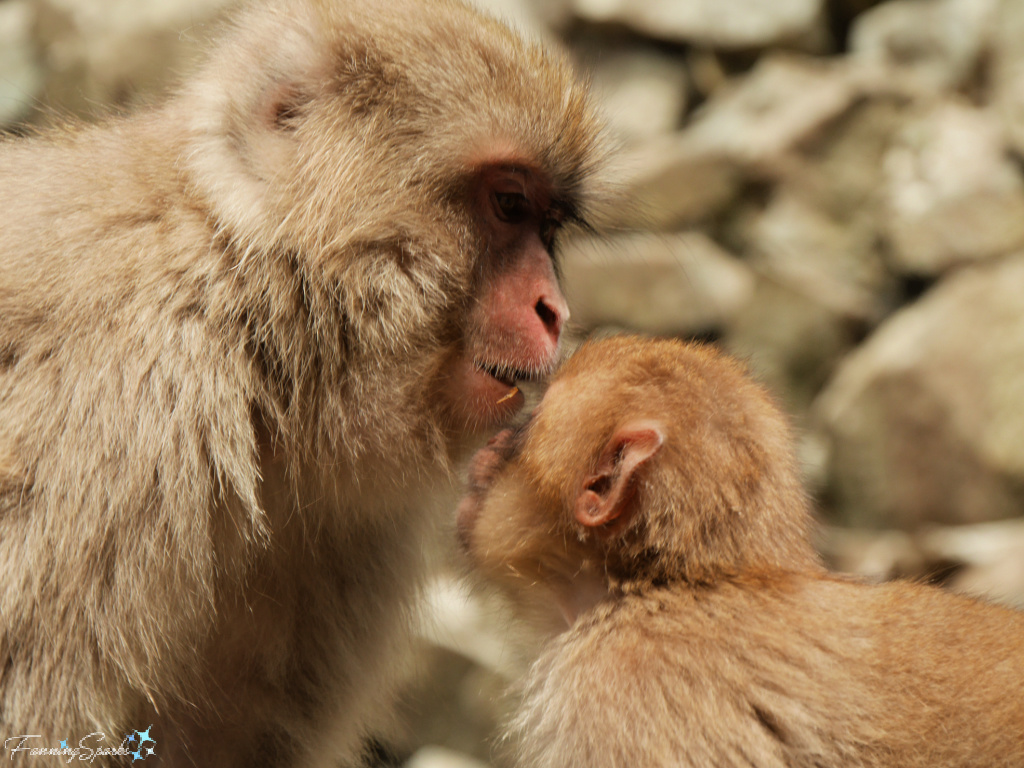
… and a grooming session.
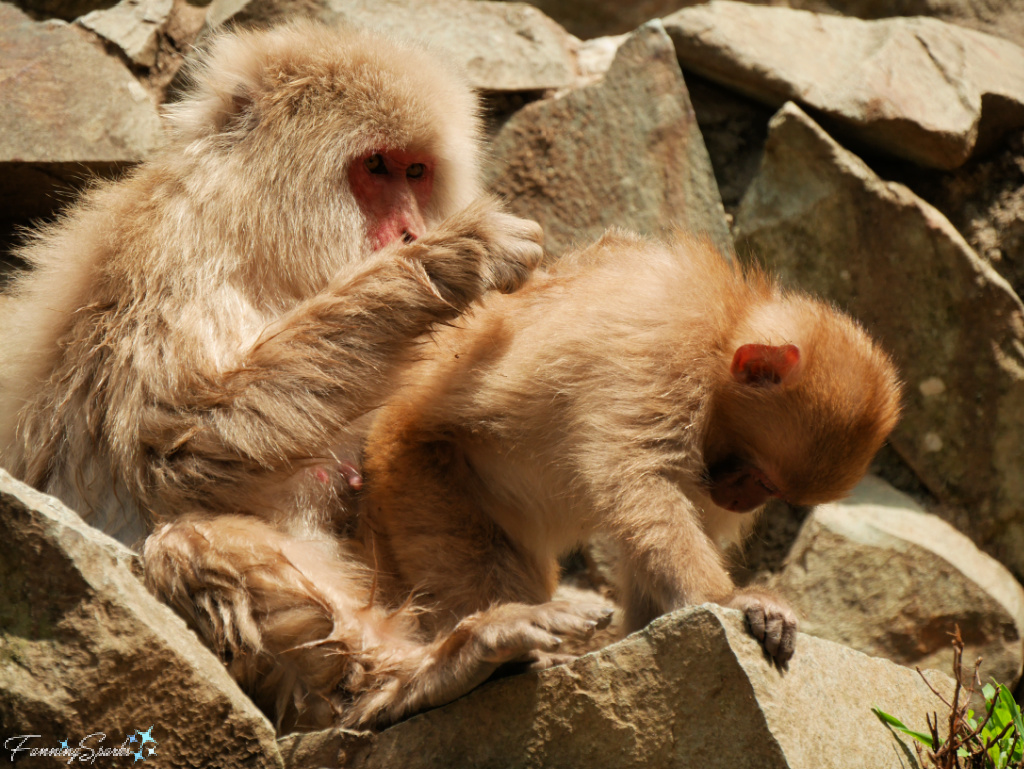
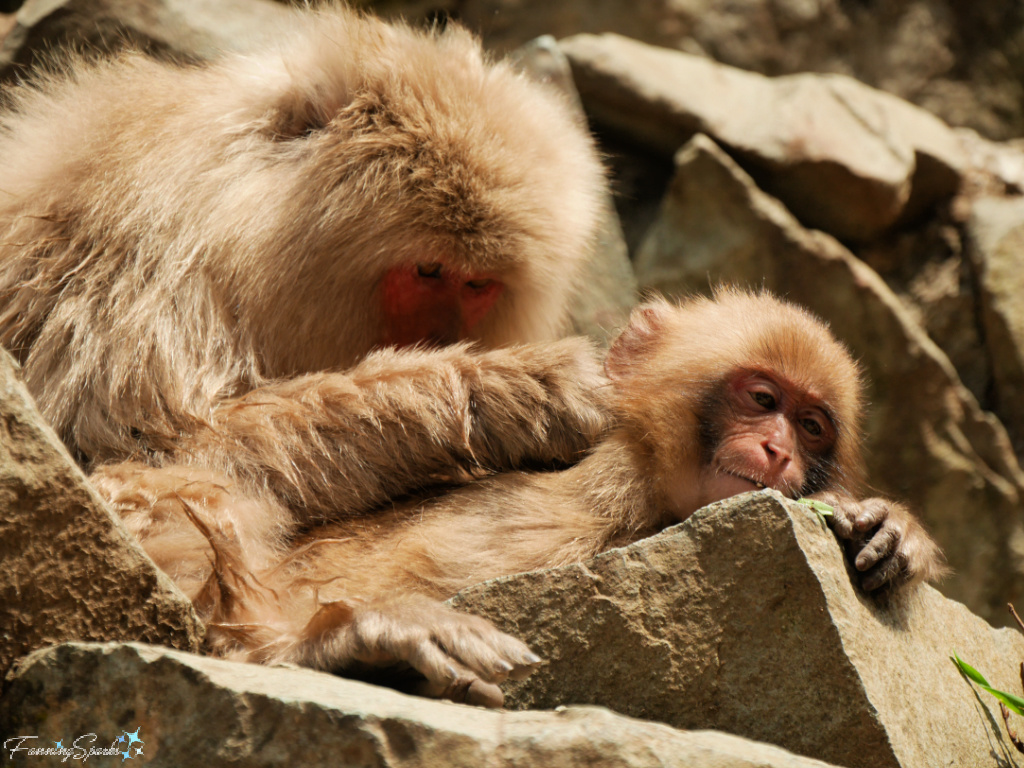
Author Cynthia Overbeck explains “Most macaques, both adults and youngsters, also keep in touch with one another through the action called grooming. A mother begins grooming her baby soon after it is born. She uses her hands to pick through the baby’s fur, pulling out dirt and bugs that have gotten caught there.” Seeing the mother’s hands up close was a little unnerving because the structure, dexterity and motions are so very similar to human hands!
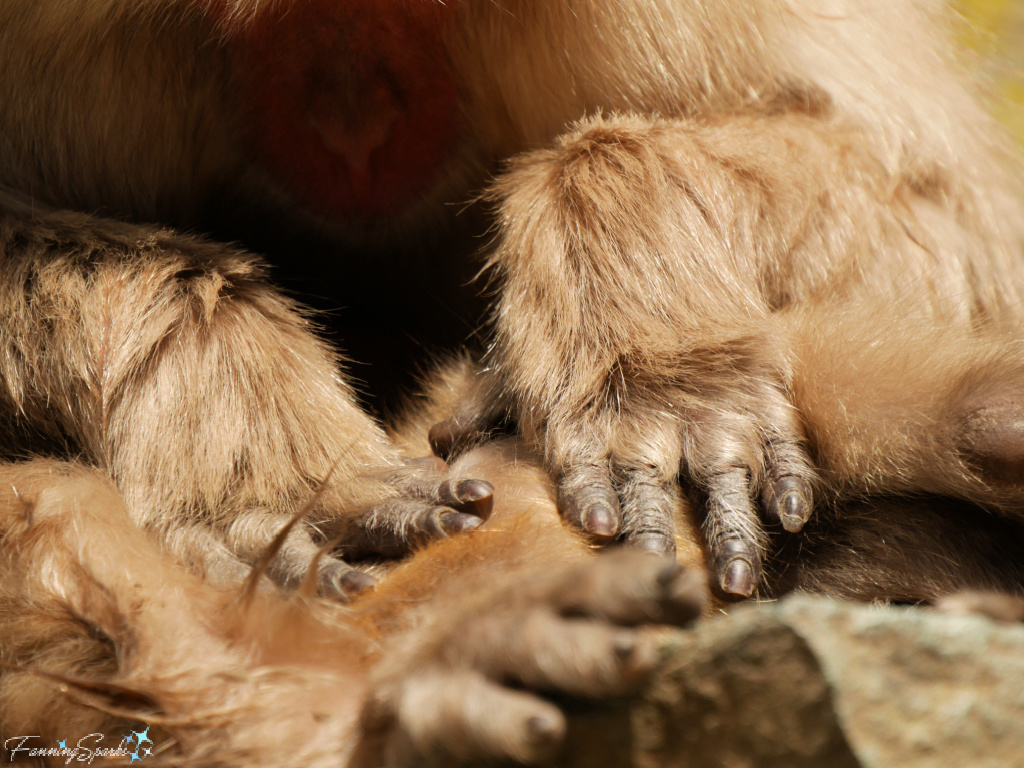
After the mother finished grooming, she nursed her baby.
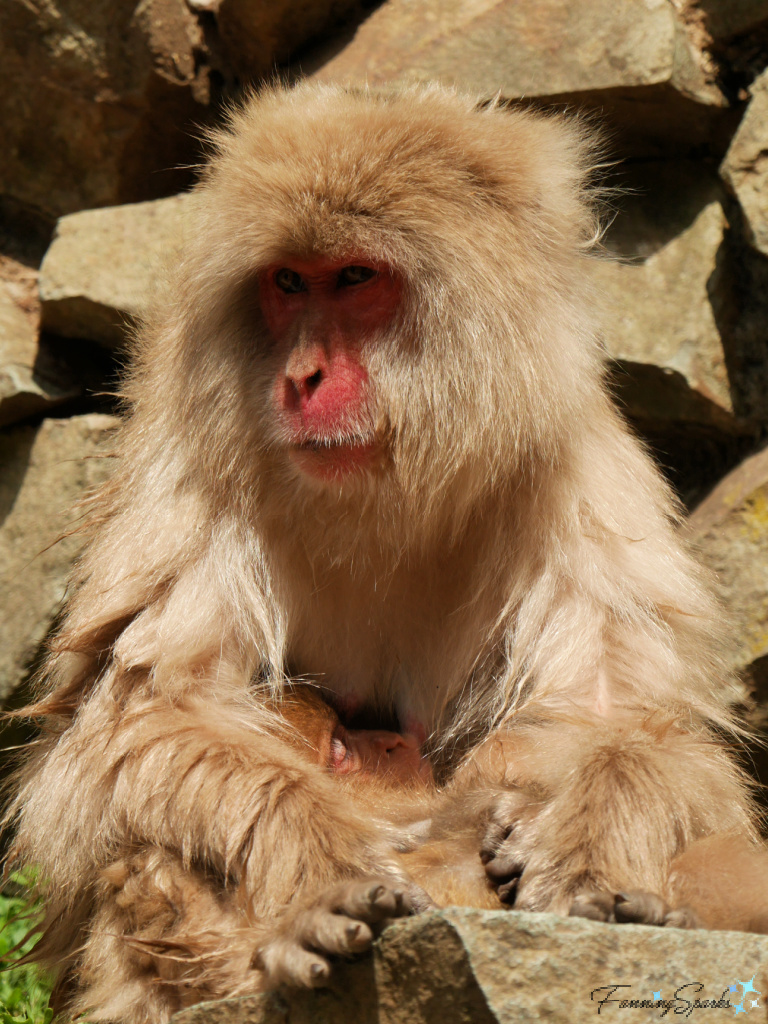
Here’s a closer look at the baby’s contented little face.

This was followed by a big, long hug!
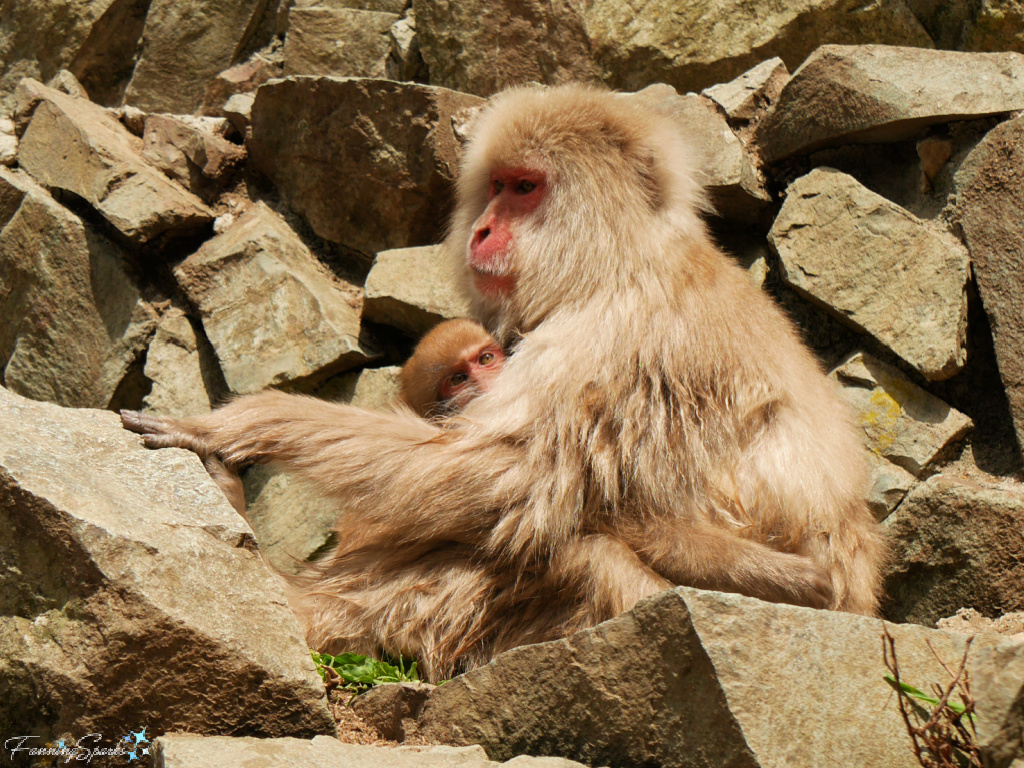
Awwww! So sweet! This scene may just be the perfect illustration of the Japanese word “kawaii”—literally meaning acceptable for affection and commonly translated as cute, adorable or endearing.

More Information
To learn more about Japan’s Jigokudani Monkey Park (Jigokudani Yaen Kōen), check out their website or Facebook page or this Japan Travel page.
The following resources about Japanese macaques were consulted for this blog post:
. LIFE Magazine article, Snowbound Monkeys in a Hot Bath, Jan 1970.
. Smithsonian Magazine article, What Japan’s Wild Snow Monkeys Can Teach Us About Animal Culture, by Ben Crair in Jan 2021.
. Monkeys: the Japanese Macaques by Cynthia Overbeck which can be found on Internet Archive.
Check the FanningSparks’ Travel > Asia > Japan category index to learn more about my adventures in Japan.
Today’s Takeaways
1. Observe wildlife to learn more about nature.
2. When possible, observe wildlife in their natural habitats.
3. When the signs say “Do Not Touch the Monkeys”, do not touch the monkeys!


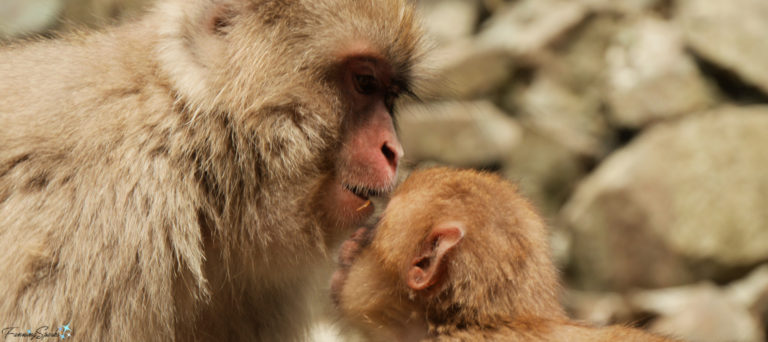


Comments are closed.